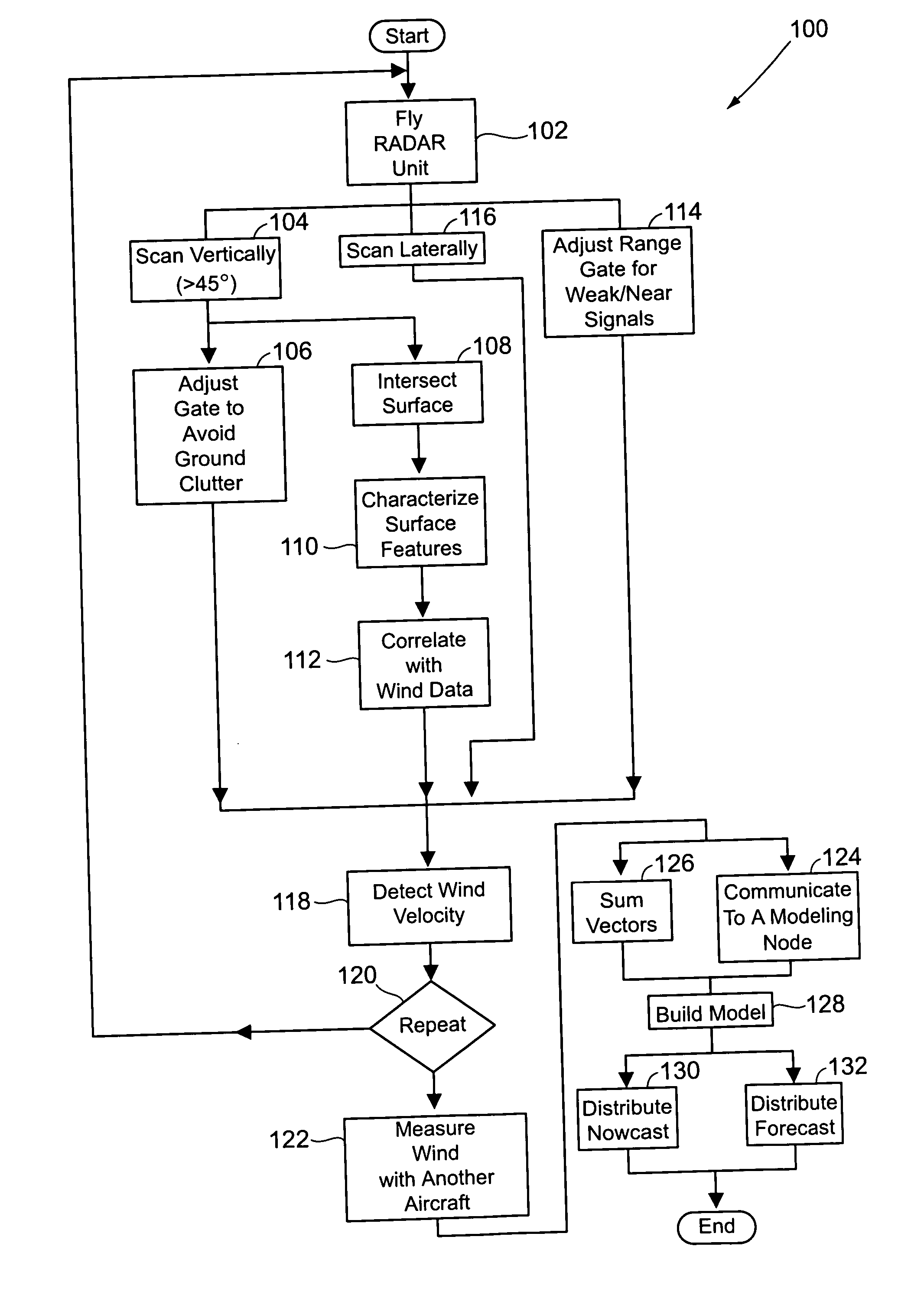Measuring wind vectors remotely using airborne radar
a technology of airborne radar and wind velocity, which is applied in the field of meteorological radar, can solve the problem that radars are only able to resolve six discrete problems, and achieve the effect of improving the accuracy of wind velocity measuremen
- Summary
- Abstract
- Description
- Claims
- Application Information
AI Technical Summary
Benefits of technology
Problems solved by technology
Method used
Image
Examples
Embodiment Construction
[0017] Referring to the accompanying drawings in which like reference numbers indicate like elements, FIG. 1 illustrates a wind vector measuring system constructed in accordance with the principles of the present invention.
[0018] The exemplary system 10 shown in FIG. 1 includes several aircraft 12, 14, and 16 equipped with airborne meteorological radar units (hereinafter “weather radars”) that typically detect precipitation 18 (shown schematically as a cloud) in the projected flight path of the aircraft 12, 14, and 16. Of course, the several aircraft 12, 14, and 16 could instead be one aircraft shown at different times as it travels along its flight path. The weather radars aboard the aircraft 12, 14, and 16 have been modified to detect the wind velocity vwind not only along the projected flight path(s) but also in areas 20 offset from the flight path. For example, the area 20 where the wind velocity vwind will be measured is shown in FIG. 1 as being offset from the projected fligh...
PUM
 Login to View More
Login to View More Abstract
Description
Claims
Application Information
 Login to View More
Login to View More - R&D
- Intellectual Property
- Life Sciences
- Materials
- Tech Scout
- Unparalleled Data Quality
- Higher Quality Content
- 60% Fewer Hallucinations
Browse by: Latest US Patents, China's latest patents, Technical Efficacy Thesaurus, Application Domain, Technology Topic, Popular Technical Reports.
© 2025 PatSnap. All rights reserved.Legal|Privacy policy|Modern Slavery Act Transparency Statement|Sitemap|About US| Contact US: help@patsnap.com



